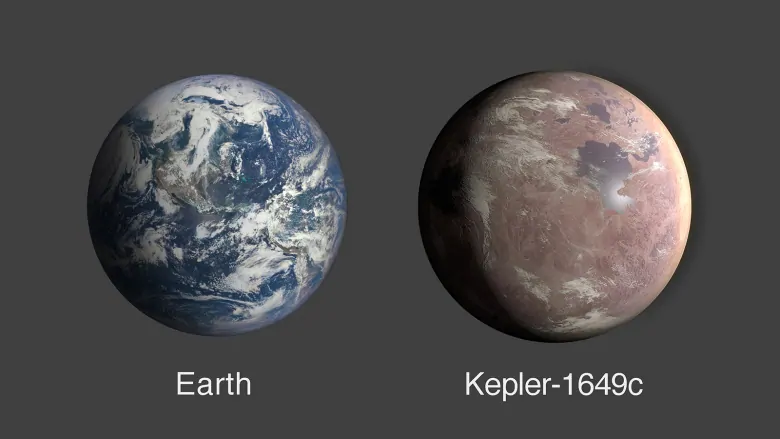Potentially habitable Earth-like planet found hidden in old satellite data

About 300 light-years from Earth lies a planet that is unlike any other ever discovered: one that is similar to our home both in terms of size and temperature and that lies within its host star’s habitable zone.
The planet is called Kepler-1649c. It is just 1.06 times larger than Earth and receives about 75 per cent the amount of sunlight our own planet receives. It orbits a small red dwarf star (Kepler-1649) so closely that one year is just 19.5 Earth days.
Because it lies within the habitable zone — a region around a star where liquid water could exist on a planet’s surface — it could be an intriguing candidate for potential life.
The planet was found orbiting a medium-sized M-class red dwarf star, the most common type of star in the galaxy, which gives added importance to this particular finding. Our own sun is a yellow dwarf star.
“[A] very interesting point raised by this paper is that we think medium-sized M-dwarfs might have more habitable planets compared to the early M-dwarfs, the ones that are slightly larger,” said Chelsea Huang, a postdoctoral scholar at the MIT Kavli Institute for Astrophysics and Space Research and corresponding author of the paper published in the journal Astrophysical Journal Letters.
“This is quite interesting because there are more small M-dwarfs than larger M-dwarfs in the galaxy.”
But more than that, it also says something specifically about Earth-like planets in our galaxy.
“It tells us that these potentially Earth-like planets — the ones that are the same size, same temperature — might be more common than we thought around the smallest stars in our galaxy,” said Andrew Vanderburg, another corresponding author of the paper and a NASA Sagan Postdoctoral Fellow at the University of Texas at Austin.
Challenges for life
Though these types of stars are numerous, they pose a problem when searching for potentially habitable planets. Red dwarfs are much smaller than our sun, but are incredibly active, releasing harmful ultraviolet radiation that could strip away a planet’s atmosphere, thus making it unsuitable for life as we know it.
However, when it comes to the star in this system, no UV eruptions have been observed, though that doesn’t necessarily mean it doesn’t ever release any radiation. As well, these stars have incredibly long lifetimes, lasting potentially 100 billion years. So early on in Kepler-1649’s lifetime, it would have likely been far more active.

“The star is not particularly active compared to other stars that are similar in size to this one, but that doesn’t mean it wasn’t always the case,” said Vanderburg.
That raises a couple of questions, he said. Could an atmosphere survive millions of years of UV bombardment? And if not, if Kepler-1649c was stripped of its atmosphere, could a new atmosphere form?
Astronomers aren’t sure.
Surprising discovery
NASA’s Kepler space telescope was launched in 2009 with the sole purpose of searching for planets orbiting other stars. The telescope went out of service in 2018 after experiencing multiple issues. However, before it was decommissioned, it had found thousands of confirmed exoplanets.
But there is still an incredible amount of data left to pore through. Astronomers had written software — called Robovetter — that could go through that data and identify potential planets. However, there was always the possibility the algorithm could miss the data, so a team of roughly a dozen astronomers are going manually through rejected data.
And that’s how they found Kepler-1649c.
The error occurred because the star in the system moves quite fast through the galaxy. So the telescope wasn’t aimed perfectly at the star, which created a lot of “noise” in the data, which Robovetter dismissed.
Though Kepler-1649c is roughly the same temperature as Earth, it’s still unknown whether or not it has an atmosphere. It might take some time to determine that, but for now, it’s extremely promising, the researchers said.
“The way I kind of think of it is that this was kind of an intelligence report,” Vanderburg said. “We found this planet. We’ve now used it to update our measurements of how common planets like this are around the very smallest stars.
“And it gets … better and better for the prospects of us finding similar planets around stars are much closer to us.”





